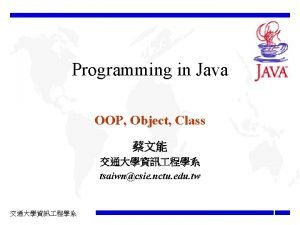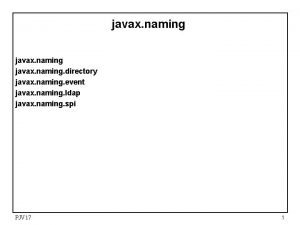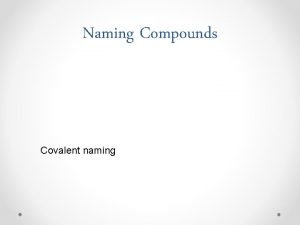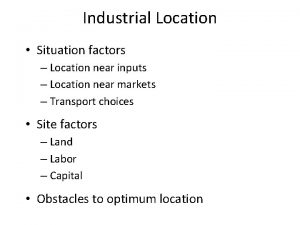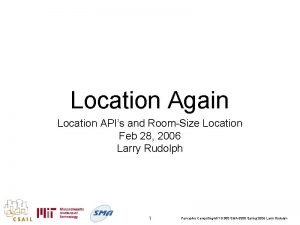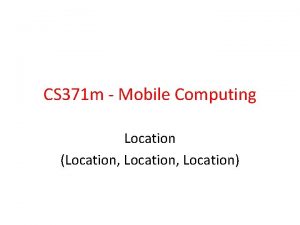LOCATION INDEPENDENT NAMING INTRODUCTION Location independent naming as













- Slides: 13

LOCATION INDEPENDENT NAMING

INTRODUCTION Location independent naming as a mechanism to support nomadic computing on the internet.

• allows the machine to keep the same name as it moves around the internet by rebinding its name to its local address when it moves. • communicate without the performance penalties, security issues or need for infrastructure support of mobile IP. • proposed functionality of DNS(Domain Name System) and DHCP(Dynamic Host Configuration Protocol).

LIN Protocol • Involves three steps: --Setup --Use -- Tear Down • Travelling host send message to its home DNS server using the DHCP. • Host can renew TTL on its mapping using steps.



• two ways of destroying name to address binding: -- to wait for the TTL to elapse -- to inform the DHCP and DNS servers to revoke the mapping while moving.

TECHNICAL DETAILS • How Does DHCP know to trust the travelling host? • Stale DNS cache entries • The effect of short TTLs on DNS load • How can the travelling host securely update its home DNS entry? • What happens if the travelling host moves to a new location before its lease expires? • What changes to DNS are needed for LIN?

• When cam the local DHCP server reuse the travelling host’s IP address? . What changes to the travelling host are needed for LIN? . What changes to the local DHCP server are needed for LIN? . LIN uses existing trust relationships.

EXTENSIONS TO LIN • Adding transparent mobility. • two approaches. • Reducing minimum time to move between networks. • host to leave an agent its old location that will forward packets to the client at its new location. • Alternatives to modifying DNS and DHCP. • modifying DNS by setting TTL’s for ARR.

RELATED WORK • Comparison to mobile IP. • Supporting mobility with DNS and DHCP. • Immutable association between a LIFN (Location Independent File. Name) and a specific byte stream.


THANK YOU
 Two main clauses
Two main clauses Location independent support
Location independent support A cross country skier moves from location a
A cross country skier moves from location a Market area plant strategy
Market area plant strategy Introduction paragraph format
Introduction paragraph format In an ionic compound the chemical formula represents
In an ionic compound the chemical formula represents Naming and writing formulas
Naming and writing formulas Metallic bonding naming
Metallic bonding naming Prime mover of knee flexion
Prime mover of knee flexion Taxonomic classification of cat
Taxonomic classification of cat 46inches to feet
46inches to feet Name the compound al2br3
Name the compound al2br3 Properties of arrhenius bases
Properties of arrhenius bases Four principles of oop
Four principles of oop













